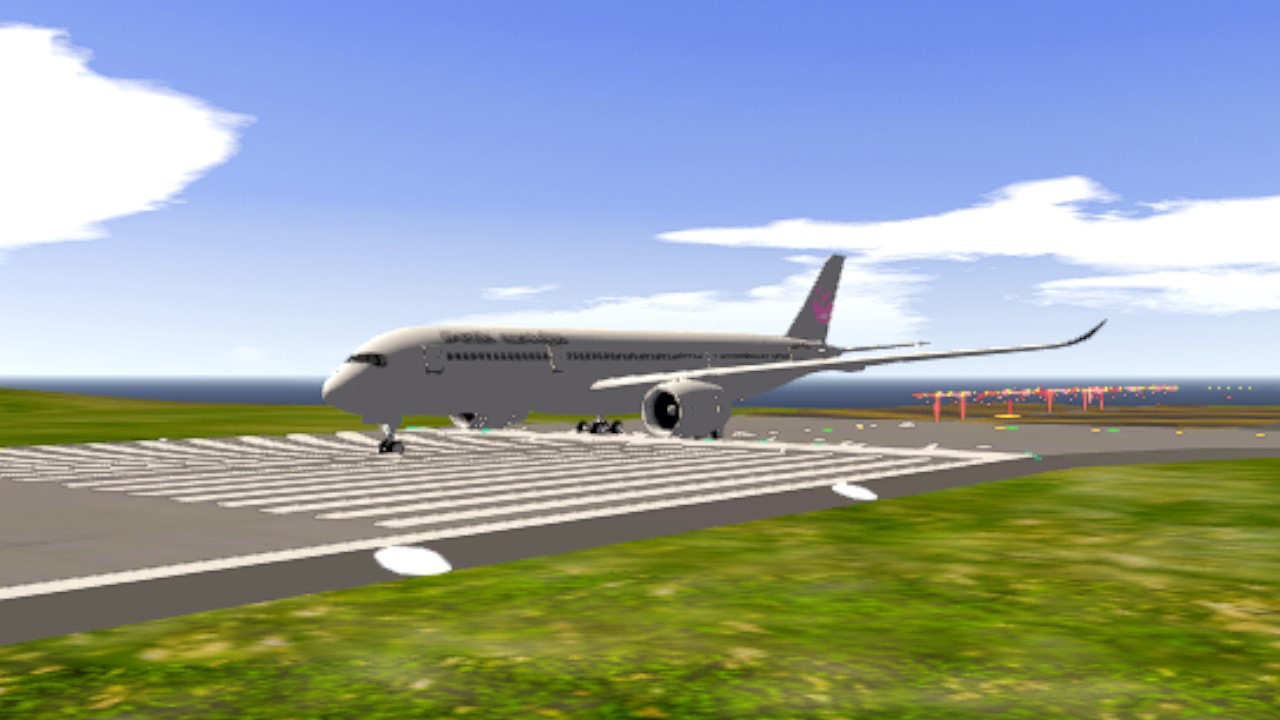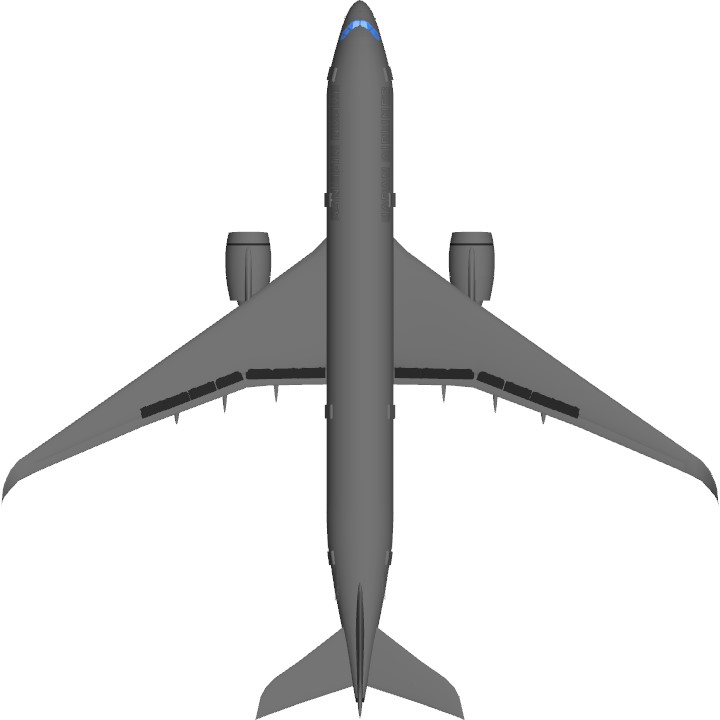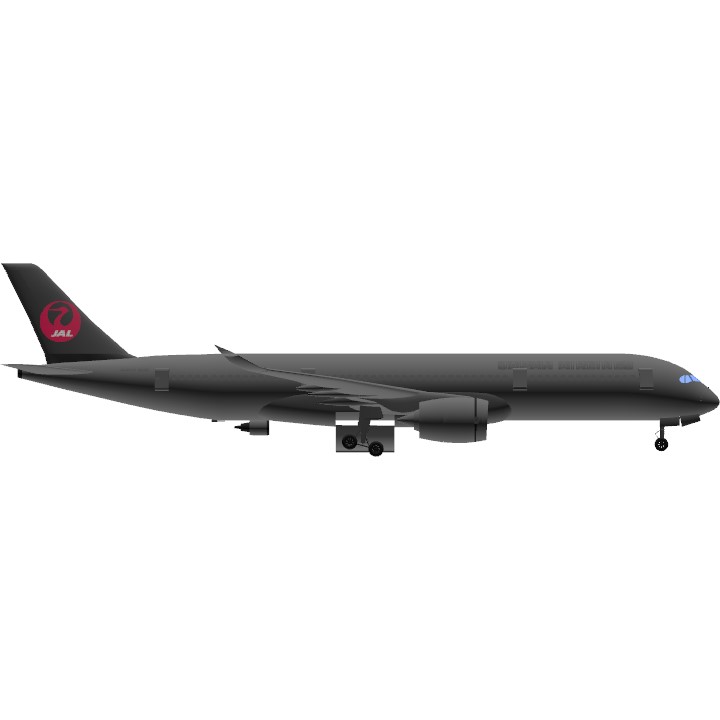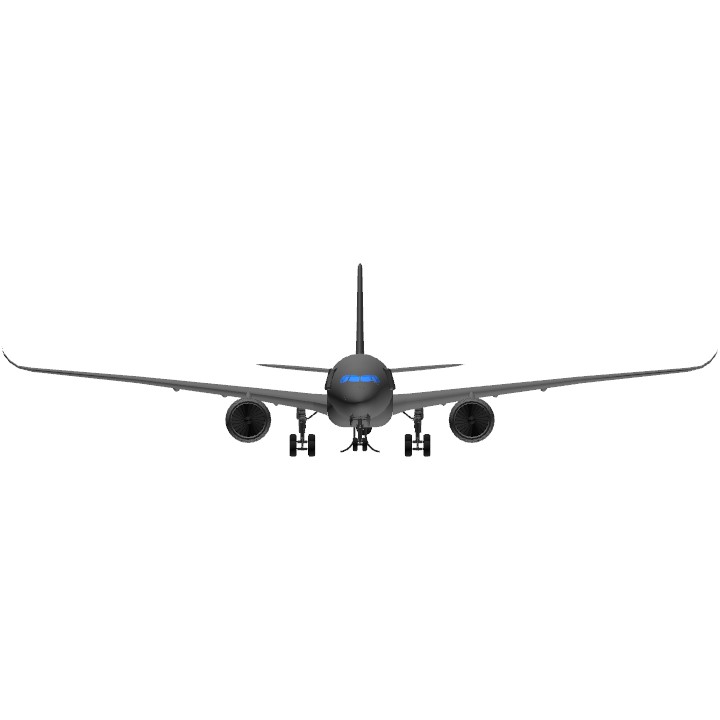Controls:
Group 1 - Taxi Enfine
Group 2 - Reverse Thrust
VTOL - Flaps
Trim - Trim
Minigun - Fire (Please don't shoot the hidden engine too much or else it will explode.)
About the Airbus A350
The Airbus A350 is a long-range, wide-body twin-engine jet airliner developed and produced by Airbus. The first A350 design proposed by Airbus in 2004, in response to the Boeing 787 Dreamliner, would have been a development of the Airbus A330 with composite wings and new engines. As market support was inadequate, in 2006, Airbus switched to a clean-sheet "XWB" (eXtra Wide Body) design, powered by two Rolls-Royce Trent XWB high bypass turbofan engines. The prototype first flew on 14 June 2013 from Toulouse, France. Type certification from the European Aviation Safety Agency (EASA) was obtained in September 2014, followed by certification from the Federal Aviation Administration (FAA) two months later.
The A350 is the first Airbus aircraft largely made of carbon-fibre-reinforced polymers. It has a new fuselage designed around a nine-abreast economy cross-section, up from the eight-abreast A330/A340. It has a common type rating with the A330. The airliner has two variants: the A350-900 typically carries 300 to 350 passengers over a 15,000-kilometre (8,100-nautical-mile; 9,300-statute-mile) range, and has a 283-tonne (617,300-pound) maximum takeoff weight (MTOW); the longer A350-1000 accommodates 350 to 410 passengers and has a maximum range of 16,100 km (8,700 nmi; 10,000 mi) and a 319 t (703,200 lb) MTOW.
On 15 January 2015, the initial A350-900 entered service with Qatar Airways, followed by the A350-1000 on 24 February 2018 with the same launch customer. As of November 2023, Singapore Airlines is the largest operator with 63 A350-900 aircraft in its fleet. A350 orders stood at 1072 aircraft, of which 571 had been delivered and all were in service with 39 operators. The global A350 fleet had completed more than 1,175,000 flights on more than 1,070 routes with one hull loss being an airport-safety related accident. It succeeds the A340 and competes against Boeing's large long-haul twinjets: the Boeing 777, and its successor, the 777X.
2024 Haneda Airport runway collision
Japan Airlines flight 516 (ICAO flight number JAL516) departed New Chitose Airport at 16:27 JST (07:27 UTC) en route to Haneda Airport. The flight landed after dark with light and variable winds, visibility greater than 10 km (6.2 mi), few clouds at 2,000 feet (610 m), and a scattered cloud layer at 9,000 feet (2,700 m).
At approximately 17:47 JST (08:47 UTC), JAL516 collided with a Japan Coast Guard Dash 8, identified by its call sign and registration number JA722A, while landing on runway 34R at Haneda Airport. CCTV footage shows a fireball erupting from the aircraft, with the JAL plane leaving a fiery trail as it travelled down the runway for about 1 km (0.62 mi) before coming to a stop. Smoke filled the A350's cabin quickly after the incident.Firefighters arrived at the scene in about three minutes, with about 100 fire trucks responding. According to the Tokyo Fire Department, the fire was largely extinguished shortly after midnight, by which time the plane's structure had collapsed due to the intensity of the flames. The collision and subsequent fire were captured by CCTV cameras in Terminal 2.
According to a statement by a JAL spokesman, the three pilots felt a sudden shock immediately after landing and lost control of the aircraft while trying to maintain its course along the runway. They were unaware that a fire had broken out on board until they were informed by a cabin attendant that the left engine was on fire, and one of the pilots later said that he had seen an object that had caused him concern before the collision. However, the three pilots denied that they had visually confirmed the presence of the Coast Guard aircraft.
With the right engine still running, all 367 passengers and 12 crew members on board JAL516 evacuated through three of the plane's eight evacuation slides, located at doors 1L, 1R and 4L. JAL said the plane's in-flight announcement system had failed, leading the crew to give instructions through megaphones or by shouting. Eight children were on board. Two pets, a dog and a cat, were checked in on board and died. Fifteen people on board suffered minor injuries, four of whom were taken to hospital. It was noted that no one was deplaning with hand luggage, a factor that facilitated a smoother evacuation from the aircraft, and another factor cited in the survival of those on board was that the aircraft, one of the first commercial models to be made of composite carbon fibre materials, appeared to have withstood the initial impact of the collision and fire relatively well. The plane was fully evacuated at 18:05 JST (09:05 UTC), 18 minutes after landing, and the captain was the last person to leave the plane, according to Japan's public broadcaster NHK.
Specifications
Spotlights
- IndoMaja 1.2 years ago
- VietnamAirlinesFlight474 1.3 years ago
- AkhiraTan0232 11 months ago
- VNAFlight474Alternate 1.2 years ago
General Characteristics
- Created On Windows
- Wingspan 210.5ft (64.2m)
- Length 211.4ft (64.4m)
- Height 56.8ft (17.3m)
- Empty Weight 364,420lbs (165,298kg)
- Loaded Weight 630,297lbs (285,898kg)
Performance
- Power/Weight Ratio 0.641
- Wing Loading 35.5lbs/ft2 (173.5kg/m2)
- Wing Area 17,739.9ft2 (1,648.1m2)
- Drag Points 35743
Parts
- Number of Parts 589
- Control Surfaces 5
- Performance Cost 2,972





You are super Good, you fixed